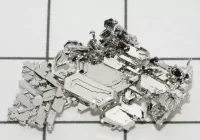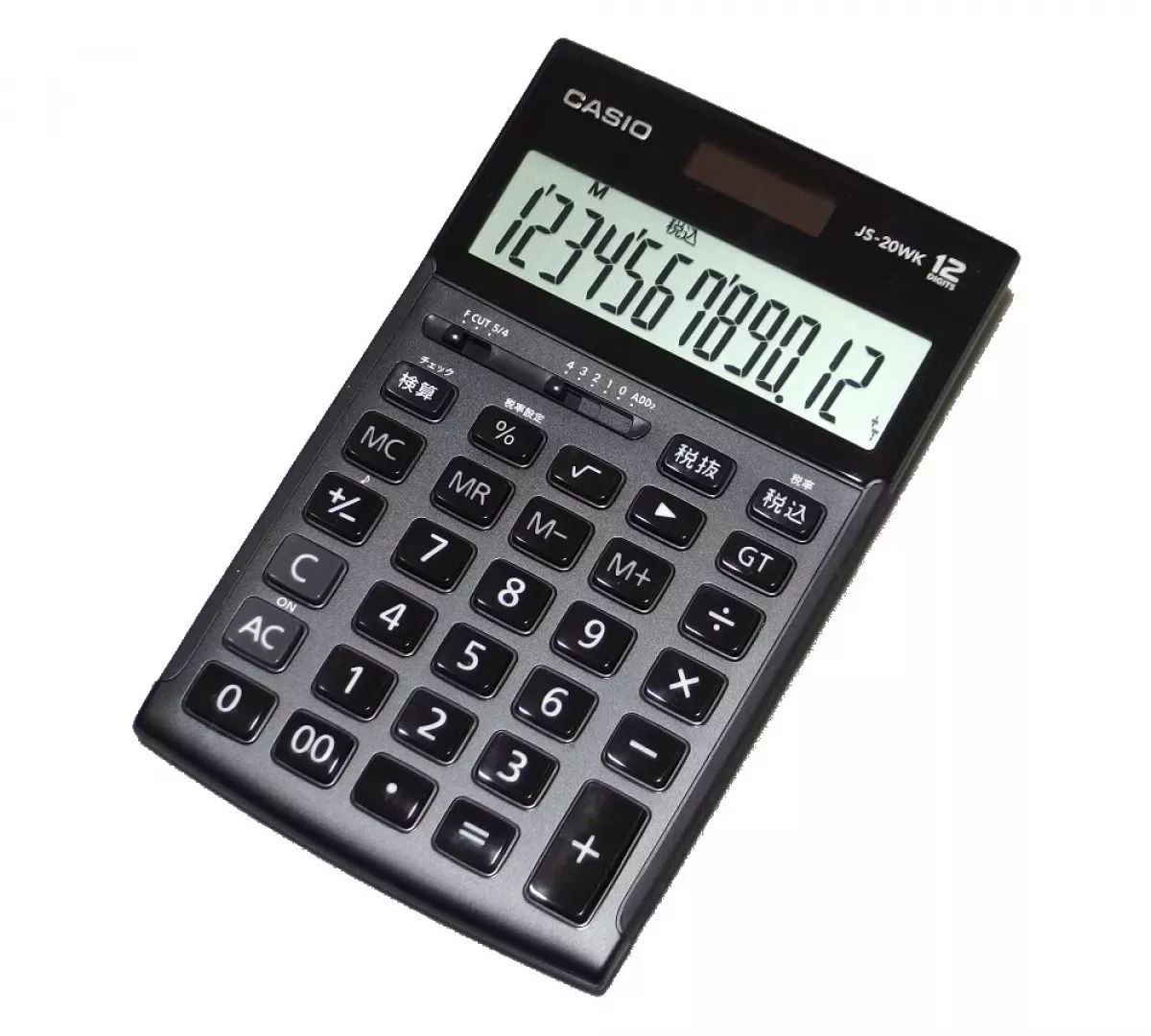An electronic calculator is a portable electronic device designed for performing calculations. Its capabilities span from basic arithmetic operations to more advanced mathematical functions. Calculators are ubiquitous tools used in various fields for quick and accurate computation.
1902: Push-Button User Interface Developed
In 1902, the familiar push-button user interface was developed with the introduction of the Dalton Adding Machine by James L. Dalton in the United States.
1921: Clarke Calculator Invention
In 1921, Edith Clarke invented the "Clarke calculator", which simplified calculations for inductance and capacitance in power transmission lines for electrical engineers.
1948: Curta Calculator Development
In 1948, the Curta calculator, a portable mechanical device capable of addition, subtraction, multiplication, and division, was developed and became popular despite its cost.
1957: Casio Model 14-A and IBM 608 Release
In 1957, the Casio Computer Company in Japan released the Model 14-A calculator, the world's first all-electric compact calculator. Also in 1957, IBM released the IBM 608, its first all-transistor product.
October 1961: Announcement of the ANITA Calculator
In October 1961, the British Bell Punch/Sumlock Comptometer ANITA, the world's first all-electronic desktop calculator, was announced. It used vacuum tubes, cold-cathode tubes and Dekatrons in its circuits.
1962: ANITA Calculator Delivery
In early 1962, delivery of the ANITA (A New Inspiration To Arithmetic/Accounting) calculator began in Europe and Britain.
June 1963: Friden EC-130 Introduced
In June 1963, the U.S. manufactured Friden EC-130, featuring an all-transistor design and Reverse Polish Notation (RPN), was introduced to the calculator market.
1964: Introduction of All-Transistor Electronic Calculators
In 1964, Sharp introduced the CS-10A, and Industria Macchine Elettroniche of Italy introduced the IME 84, both all-transistor electronic calculators.
1964: Mathatronics Mathatron Introduction
In 1964, the Mathatronics Mathatron, one of the first desktop programmable calculators, was introduced.
1965: ELKA 6521 Introduction
In 1965, Bulgaria's ELKA 6521, the first calculator in the world with a square root function, was introduced. Later that year, the ELKA 22 and ELKA 25 were also released.
1965: Olivetti Programma 101 Introduction
In late 1965, the Olivetti Programma 101, a solid-state, desktop, printing, floating point, algebraic entry, programmable, stored-program electronic calculator, was introduced. It featured offline program storage via magnetic cards.
1966: Victor 3900 Sales Delayed Until 1966
The Victor 3900 was the first calculator to use integrated circuits, however production problems delayed sales until 1966.
1967: Casio (AL-1000) Production
In 1967, Casio produced the (AL-1000), one of the early programmable desktop calculators, featuring a nixie tubes display and transistor electronics and ferrite core memory.
1967: Cal Tech Prototype Development
In 1967, the "Cal Tech" prototype, led by Jack Kilby at Texas Instruments, was developed as a research project to produce a portable calculator.
1967: Monroe Epic Programmable Calculator Market Release
In 1967, the Monroe Epic programmable calculator came on the market, featuring computer-like functions but lacking conditional branch logic.
1970: Portable Models with Low Power Consumption
By 1970, calculators were made using low power consumption chips, leading to portable models powered by rechargeable batteries.
1970: First Commercially Produced Portable Calculators
In 1970, the first commercially produced portable calculators appeared in Japan, including the Sanyo ICC-0081 "Mini Calculator", the Canon Pocketronic, and the Sharp QT-8B "micro Compet".
January 1971: Sharp EL-8 Introduction
In January 1971, Sharp introduced the Sharp EL-8, also marketed as the Facit 1111, a close to pocket calculator.
May 1971: DB 800 Release
In May 1971, the first European-made pocket-sized calculator, DB 800, was made in Buje, Croatia (former Yugoslavia) with four functions and an eight-digit display.
1971: Pico Electronics and General Instrument Collaboration
In 1971, Pico Electronics and General Instrument introduced their collaboration in ICs, a full single chip calculator IC for the Monroe Royal Digital III calculator.
1971: First "Calculator on a Chip"
In 1971, all of the logic functions of a calculator were squeezed into the first "calculator on a chip" integrated circuits (ICs).
1971: Busicom LE-120A "HANDY" Marketed
In early 1971, the Busicom LE-120A "HANDY", the first truly pocket-sized electronic calculator was marketed. It was also the first to use an LED display, the first hand-held calculator to use a single integrated circuit (a calculator on a chip), and the first to run off replaceable batteries.
1971: Introduction of Calculator on a Chip
In early 1971, the first "calculator on a chip", the MK6010 by Mostek, followed by Texas Instruments later in the year, was introduced, leading to cheap pocket calculators.
1971: Bowmar 901B Release
In the Autumn of 1971, the first American-made pocket-sized calculator, the Bowmar 901B (popularly termed The Bowmar Brain), came out.
August 1972: Sinclair Executive Release
In August 1972, the four-function Sinclair Executive became the first slimline pocket calculator.
1972: CMOS Technology in Calculators
In 1972, CMOS technology was introduced in the Sharp "EL-801". This reduced power consumption as the transistors in the logic cells only used power when changing state.
1972: Early LCD Calculators
In 1972, Rockwell International manufactured the first successful calculators with LCDs and were sold by other companies. These early LCDs used Dynamic Scattering Mode with bright numbers on a dark background, illuminated by a filament lamp.
1972: Sharp EL-805 Launch
In 1972, Sharp Inc. launched a series of calculators using reflective DSM-LCD, including the Sharp EL-805, a slim pocket calculator utilizing Sharp's Calculator On Substrate (COS) technology.
August 1973: Sinclair Cambridge Launched
In August 1973, the Sinclair Cambridge, one of the first low-cost calculators, was launched.
1973: Elektronika B3-04 Development
By the end of 1973, the first Soviet Union made pocket-sized calculator, the Elektronika B3-04, was developed.
1973: Texas Instruments SR-10 Introduction
In 1973, Texas Instruments (TI) introduced the SR-10, an algebraic entry pocket calculator using scientific notation.
1974: Elektronika B3-04 Sold
At the start of 1974, the first Soviet Union made pocket-sized calculator, the Elektronika B3-04, was sold.
1974: HP-65: First Programmable Pocket Calculator
In 1974, Hewlett-Packard released the HP-65, which was the first programmable pocket calculator. It had a capacity of 100 instructions and featured a built-in magnetic card reader for storing and retrieving programs.
1974: ELKA 101 Pocket Model Release
In 1974, the ELKA 101, the first pocket model calculator from Bulgaria, was released and exported to western countries.
1975: Completion of the "B3-18"
By the end of 1975, the first Soviet scientific pocket-sized calculator the "B3-18" was completed.
1976: Calculator Price Drop and Market Shift
By 1976, the price of the cheapest four-function pocket calculator had significantly dropped. This made calculators affordable, but also led to many firms exiting the business due to difficulty in making a profit.
1976: Elektronika B3-21 Development
By the end of 1976, the first Soviet pocket battery-powered programmable calculator, the Elektronika B3-21, was developed.
1977: TI-30 Line Introduction
In 1977, Texas Instruments introduced the mass-marketed TI-30 line of calculators, which is still produced today.
1977: Elektronika B3-21 Release
In early 1977, the Elektronika B3-21, the first Soviet pocket battery-powered programmable calculator, was released.
1978: Solar-Powered Calculators
Around 1978, solar cells were used as the power source in calculators, such as the Royal Solar 1, Sharp EL-8026, and Teal Photon.
1978: Calculated Industries Founded, Loan Arranger Launched
In 1978, Calculated Industries was established, focusing on specialized markets. Their initial product, the Loan Arranger (1978), was introduced as a pocket calculator tailored for the Real Estate sector, featuring preprogrammed functions to streamline payment and future value calculations.
1978: Casio Mini Card LC-78
In 1978, credit-card-sized calculators, such as the Casio Mini Card LC-78, became available. These calculators used field-effect, twisted nematic LCDs and could run for months on button cells.
1979: HP-41C: First Alphanumeric, Programmable, Expandable Calculator
In 1979, HP introduced the HP-41C, the first alphanumeric, programmable, and expandable calculator. It could be expanded with memory modules and peripherals like bar code readers and disk drives.
1981: Introduction of the HP 12c
In 1981, the HP 12c financial calculator was introduced, featuring reverse Polish notation. It is still in production today.
1985: Construction Master Calculator Launched
In 1985, Calculated Industries launched the Construction Master calculator, designed for the construction industry. It featured preprogrammed functions for common construction calculations such as angles, stairs, roofing math, pitch, rise, run, and feet-inch fraction conversions, setting the stage for future construction-related calculators.
1985: Casio fx-7000G: First Graphing Calculator
In 1985, the Casio fx-7000G was released as the first graphing calculator.
1986: Calculators Represented 41% of Computing Capacity
In 1986, calculators accounted for approximately 41% of the world's general-purpose hardware capacity for computing information.
1987: HP-28C: First Calculator with Symbolic Computing
In 1987, the HP-28C was released as the first calculator capable of symbolic computing, enabling it to solve equations symbolically.
2000: Early Arithmetic Tools
Before 2000 BC, Sumerians and Egyptians were known to use tools like bones, pebbles, counting boards, and the abacus to aid in arithmetic calculations.
2003: Release of the HP 12c Platinum Edition
In 2003, several new models were released including an improved version of the HP 12c, the "HP 12c platinum edition".
2007: Calculator Computing Capacity Decreased
By 2007, the computing capacity represented by calculators had decreased to less than 0.05% of the world's total.
December 2011: UK Review of Calculator Use in Schools
In December 2011, the UK's Minister of State for Schools voiced concern about children becoming "too dependent" on calculators, leading to a review of calculator use in the Curriculum.
2016: Calculator Costs in 2016
In 2016, the text indicates that basic calculators were inexpensive, but scientific and graphing calculators had higher costs.
Mentioned in this timeline
The Union of Soviet Socialist Republics USSR existed from to...
Japan is an East Asian island country situated in the...
Italy officially the Italian Republic is located in Southern and...
Texas the second-largest US state by area and population is...

Platinum Pt atomic number is a dense malleable ductile and...
Trending

29 days ago Severe Thunderstorms Hit North Texas: Lightning, Hail, Damaging Winds, and Power Outages

24 days ago Amy Poehler's Ina Garten Recipe, SNL Season 51 Schedule and New Episodes

9 months ago Mike Pence to receive JFK Profile in Courage Award for election action.

8 months ago Lil Wayne vows never to perform at Super Bowl after 2025 Halftime snub.

25 days ago Childcare's economic boost in Prescott Valley, Yavapai crisis, and Hochul's universal options.
2 months ago Russian Airstrikes in Ukraine Kill Six, Putin-Trump Talks Shelved Amid Escalation.
Popular

Tucker Carlson is an American conservative political commentator known for...

XXXTentacion born Jahseh Dwayne Ricardo Onfroy was a controversial yet...

Ben Shapiro is a prominent American conservative political commentator media...

Candace Owens is an American conservative political commentator and author...

William Franklin Graham III commonly known as Franklin Graham is...

John F Kennedy JFK was the th U S President...
